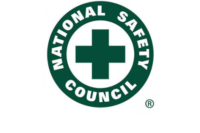Safety training programs are people talking with people about safety. One of the key components of your safety program should be to teach safety auditing skills, so supervisors and employees can observe workers who are performing normal work activities, reinforce safe work practices, and correct unsafe acts and conditions.
Doing safety observations includes deciding that safety auditing is an important priority. Allocate the time to audit people's work practices behaviors and conditions. Next, you should stop near enough to the person so that you can clearly see what he or she is doing. Be alert for evaporative acts in the first 10 to 30 seconds, and systematically observe everything. You should then act by talking with the person to reinforce safe work practices and address at-risk behaviors. Use a questioning attitude by asking, "What injuries can occur if the unexpected happens?" and "How can this job be done more safely." The last step in this observation cycle is to report your observations. The tracking and collection of data enables organizations to analyze the results of their audits to better understand strengths, gaps, and predict future performance.
Remember that actions influence performance. As you do this, your safety program will provide a path to safety excellence by making safe behavior part of the work culture. It will also help to maximize the potential for dramatic safety improvement and loss control management. For the employee, it reduces injuries and improves morale; for the employer, it boosts safe performance and overall productivity, often while cutting cost.
For more information on how to do safety observations effectively, please visit the link below.


